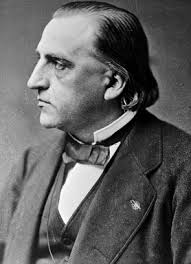.
Some years back while browsing in an antiquarian book sale I came across a translated collection of lectures by the great 19th century neurophysiologist, Jean Martin Charcot (1825-1893). Inside this book I was surprised to find diagrams of pressure ulcers that looked similar to those found in my own patients. I bought the book and learned that it contained nearly an entire chapter on Charcot’s theories on pressure ulcers. The title of the book is “Lectures on the Diseases of the Nervous System Delivered at La Salpêtrière,” and this English translation was published in 1877.
 Charcot was a towering figure in 19th century medicine. His clinic at the Salpêtrière Hospital in Paris was a magnet for physicians across Europe who came to learn from him. We remember him for eponymous clinical syndromes that include Charcot joints, Charcot’s triad, Charcot-Leyden crystals, Charcot-Marie-Tooth disease, and others. Of special interest to me, Charcot was also a visual artist who incorporated photography into his teaching, case reports, and research.
Charcot was a towering figure in 19th century medicine. His clinic at the Salpêtrière Hospital in Paris was a magnet for physicians across Europe who came to learn from him. We remember him for eponymous clinical syndromes that include Charcot joints, Charcot’s triad, Charcot-Leyden crystals, Charcot-Marie-Tooth disease, and others. Of special interest to me, Charcot was also a visual artist who incorporated photography into his teaching, case reports, and research.
As a physician studying pressure ulcers, Charcot was way ahead of his time. Over the years I published several papers describing his theories concerning these wounds. Jean Martin Charcot was the first to offer a classification of pressure ulcers. For example he made a distinction between acute pressure sore which he called decubitus acutus, and chronic pressure sore, or decubitus chronicus. He also described a wound which heralded death which he called the decubitus ominosus. Unlike much of Charcot’s other work, his theories on pressure ulcers were lost to history, waiting to be found on the shelf of an antiquarian bookstore.
Charcot’s nomenclature of the decubitus ominosus remained forgotten, but a very similar lesion was redescribed by Karen Lou Kennedy in the 1980’s. The term Kennedy Terminal Ulcer was coined by Dr. Stephen Glassley and evolved into common usage, but few are aware that the concept of pressure ulcers in dying individuals is actually over a century old.
Because Charcot’s original work is difficult to find, I scanned each page and created a PDF that is downloadable from this website. The document contains the title page of the book and 29 pages from Lecture III entitled “Disorders of Nutrition Consecutive on Lesions of the Spinal Cord and Brain.” I hope to widen awareness of Charcot’s work and make this document available to scholars and anyone else interested in the history of medical thinking on pressure ulcers.
Understanding Charcot’s Work
This chapter must be viewed in the context of his time. It was published only a few years after Florence Nightingale wrote her seminal book, Notes on Nursing (1859). He did not use the term “pressure ulcer,” but rather used “bed sore” and “decubitus.” Charcot was a contemporary of Louis Pasteur (1822-1895) whose experiments forged the connection between germs and disease, and antibiotics did not come into common use until the mid 20th century. Alzheimer’s disease was not described until 1906, and average human life expectancy was in the mid 40’s. Many patients with chronic degenerative brain disease under Charcot’s care had dementia paralytica, or tertiary syphilis.
Charcot was a neurophysiologist who incorrectly believed that organs received direct nutrients from the central nervous system, thus the title of the chapter on pressure ulcers. He believed that “bed sores” were unavoidable when the brain or spinal cord were damaged, and actually states in this chapter that he did not believe that pressure played a part. This sparked considerable disagreement with one of his contemporaries, Henri Brown-Sequard, which I described in my paper published in the Journal of the American Geriatrics Society (JAGS 40: 1281-1283, 1992). The disagreement between Charcot and Brown-Sequard was in fact the beginning of the “avoidable-unavoidable” debate on pressure ulcers.
I invite anyone interested in pressure ulcers and wound care to download this historic document. You might be confused with some of the archaic medical terminology which is colorful but difficult to understand. Terms like “mortification of the skin,” “cutaneous affection,” and “gangrenous ichor” describe changes associated with bed sores.
Today we pay little attention to the history of medicine which is as old as human civilization. I believe this to be a mistake, as history offers an important perspective on today’s practices. Baron Carl von Rokitansky (1804-1878) was an influential German physician and pathologist who was a contemporary of Charcot. In the spirit of the greatest medical doctors he also was a philosopher and humanist. Rokitansky has a quotation relevant to the study of medical history that is appropriate for readers who wish to delve further into the thought of Jean Martin Charcot on pressure ulcers. He directed it to medical students but it is applicable to anyone who cares for sick patients:
“Those about to study Medicine, and the younger Physicians, should light their torches in the fires of the Ancients.”
* * * * * * * * * * * * * * *
The Charcot chapter can be referenced as follows:
Charcot, JM. Disorders of Nutrition Consecutive on Lesions of the Spinal Cord and Brain. In: Lectures on the Diseases of the Nervous System Delivered at La Saltpetriere. London: The New Sydenham Society, 1877.
My papers on Charcot’s theories on pressure ulcers can be referenced as follows:
Related posts:
Historical Roots of the “Avoidable-Unavoidable” Pressure Ulcer Controversy
Determining the Avoidability of Pressure Ulcers
Pressure Ulcers as “Never Event”: Fact or Myth
.
